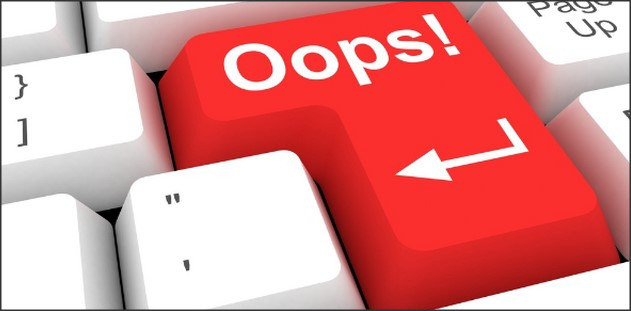
The digital revolution has ushered in a new era where virtual worlds are no longer just fantasy or science fiction. Today, the concept of virtual reality (VR) has evolved into immersive and dynamic experiences that transcend the boundaries of the physical world. Among the most intriguing and groundbreaking developments in this space is Futureverse, a new frontier in virtual worlds that promises to reshape how we interact with technology, society, and each other. In this article, we will explore the concept of Futureverse, its potential impact on various industries, and how it could revolutionize the way we experience digital spaces.
What Is Futureverse?
Futureverse represents the next generation of virtual worlds—a universe where the limits of the digital experience are pushed beyond what we have come to expect from traditional VR platforms. Unlike simple virtual environments or gaming worlds, Futureverse envisions a fully interconnected, immersive digital universe that blends augmented reality (AR), artificial intelligence (AI), and blockchain technology to create a more expansive, dynamic, and interactive experience.
At its core, Futureverse is not just a place but a concept that expands the possibilities of the virtual world. It is an open, shared digital environment where users can create, explore, interact, and even build their own spaces within it. Think of it as a massive, multi-layered metaverse—an evolving and participatory digital reality where anything is possible.
This vision of the Futureverse goes beyond simple avatars and virtual interactions. It is designed to be a place of infinite possibilities where technology works seamlessly to create a virtual society that operates similarly to our physical world but with the added benefits of digital flexibility, creative freedom, and boundless opportunities.
The Building Blocks of Futureverse
Immersive Virtual Reality and Augmented Reality
A major component of Futureverse is its focus on immersive experiences through VR and AR. Virtual reality allows users to completely immerse themselves in a digital space, while augmented reality enhances their perception of the real world by adding virtual elements on top of it. The integration of these two technologies within Futureverse will enable a truly holistic experience, where digital and physical worlds are interwoven, making it difficult to distinguish between what is real and what is virtual.
In Futureverse, VR can be used for various activities, including gaming, work, entertainment, education, and socializing. AR, on the other hand, can be used to bring virtual elements into the real world, allowing for enhanced interactions with both digital and physical environments simultaneously. Whether you’re participating in a digital meeting, attending a concert, or exploring a 3D city, the Futureverse will offer limitless opportunities to blend the physical and virtual realms.
Artificial Intelligence and Personalization
One of the key features that sets Futureverse apart from other virtual worlds is the integration of artificial intelligence. AI in the Futureverse will go beyond simple bots and avatars to offer highly personalized and adaptive experiences. The virtual environment will learn from users’ actions, preferences, and behaviors, adjusting the digital landscape and interactions to suit their needs and desires.
In practical terms, this means that within the Futureverse, every experience can be tailored to each user’s tastes. If you enjoy certain types of music, environments, or activities, the AI could curate personalized virtual worlds, events, or even content suggestions for you. This level of personalization ensures that no two experiences in Futureverse will ever be the same, making it a truly dynamic and engaging environment.
Blockchain Integration and Digital Economy
Blockchain technology will also play a crucial role in Futureverse by enabling secure, transparent, and decentralized digital economies. Through blockchain, users will have the ability to own and trade digital assets such as virtual real estate, NFTs, and other virtual goods in a manner that is safe, transparent, and verifiable. The use of cryptocurrencies will likely be integrated as a standard method of exchange in the Futureverse, offering users an efficient and secure way to engage in transactions.
In this virtual economy, users can build businesses, create digital art, develop games, and even establish virtual currencies. This offers a new realm of financial opportunities and ownership, giving individuals more control over their digital assets and interactions within the virtual world.
The Potential Impact of Futureverse on Various Industries
Entertainment and Media
Futureverse has the potential to revolutionize the entertainment and media industries by offering fully immersive experiences that go far beyond what current technologies can provide. Imagine attending a concert where the artist interacts with you, or playing a video game where the environment adapts dynamically to your actions in real time. Futureverse will blur the line between passive and active entertainment, allowing users to truly live within the media they consume.
Furthermore, the entertainment industry can create entirely new forms of content and experiences. Virtual tourism, interactive movies, and live virtual events could become commonplace, offering novel ways for people to engage with their favorite entertainment.
Education and Training
In the realm of education, Futureverse holds great promise. Imagine students exploring historical sites in a fully immersive environment or participating in simulations of complex scientific experiments without the need for physical resources. Virtual classrooms in Futureverse could offer more dynamic, interactive, and collaborative learning experiences, where students engage with content in ways that are currently not possible in traditional education settings.
Additionally, industries such as medicine, aviation, and engineering could utilize the Futureverse for advanced training programs that provide a hands-on approach without the associated risks of real-world training.
Social Interactions and Virtual Communities
Social interactions are likely to be a key driving force behind the success of Futureverse. As people increasingly seek meaningful online connections, the Futureverse offers a platform for forging deeper relationships and creating more engaging communities. Whether through virtual reality social spaces or collaborative digital environments, Futureverse provides a venue for users to meet, connect, and interact in ways that go beyond the limitations of text-based communication or even current video chat technology.
As we look forward to the evolution of virtual worlds, Futureverse presents a tantalizing glimpse into the future of digital interactions. By combining immersive virtual and augmented reality, AI-driven personalization, and blockchain-powered economies, Futureverse is poised to become a revolutionary platform that transcends traditional digital experiences. From entertainment to education and beyond, the possibilities are endless. As technology continues to advance, the Futureverse will undoubtedly expand its horizons, further integrating with our physical world and offering new ways to live, work, and play in the digital realm. In the near future, it may be the boundary-pushing platform that shapes how we understand and interact with both virtual and real worlds.




